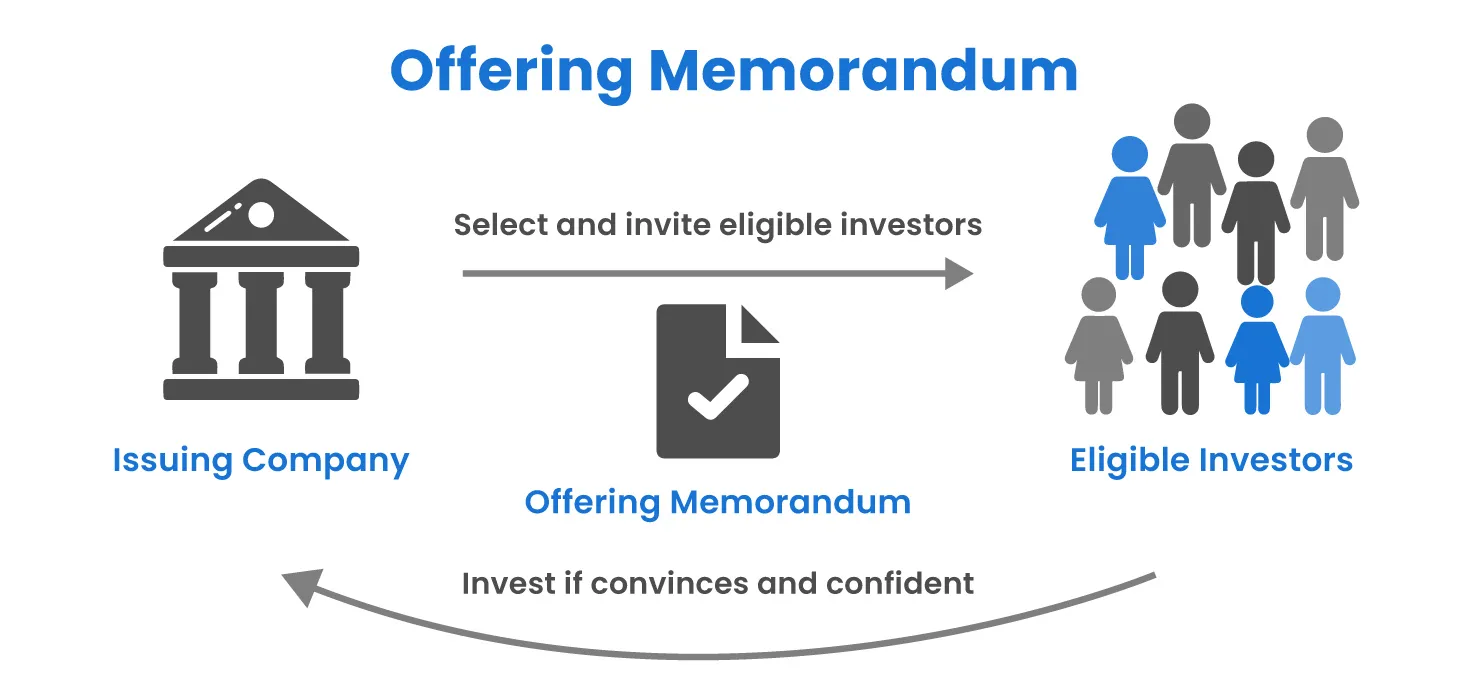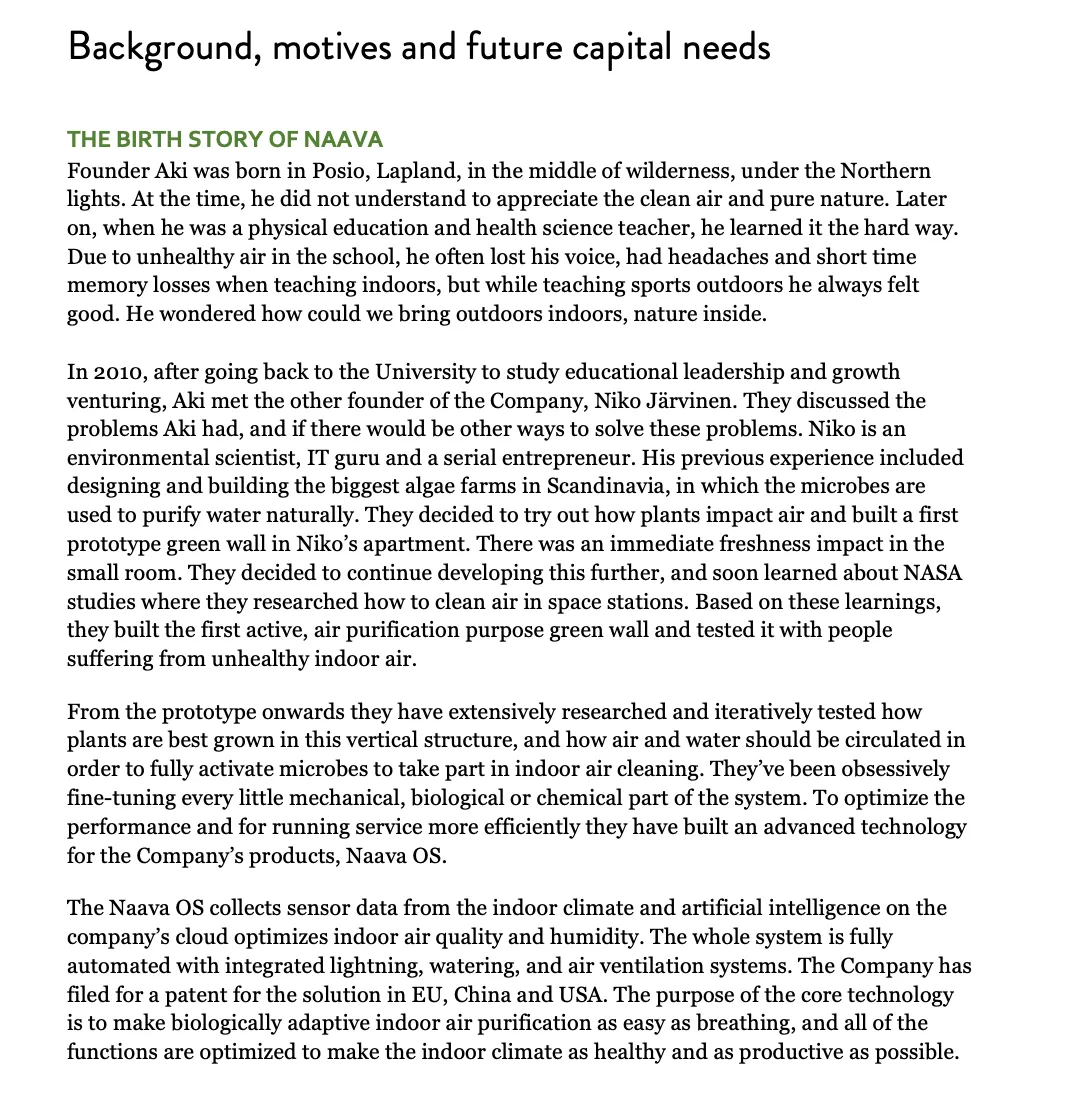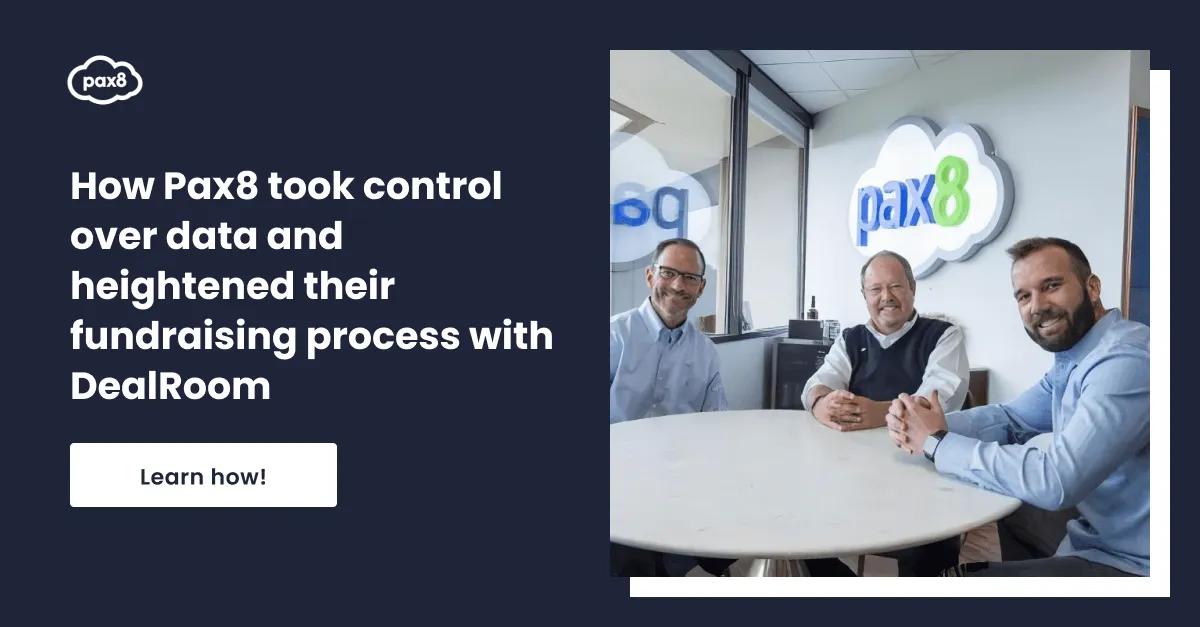Offering Memorandum: Definition, Examples, Tips (+How to Write)


.webp)
Free Resource: Due Diligence Checklist
Investors need to confirm your team deserves to be backed financially. This checklist ensures you are providing them the right information about your company.
Few companies receive investments without first creating an offering memorandum.
This document should outline the information that an investor would want to see before considering an investment in a startup business.
It’s not quite as easy as it sounds, with an industry now existing just to develop high-quality investment memos.
This is the DealRoom guide to offering memorandums.
What is an offering memorandum?
Many entrepreneurs raise early-stage companies and startups that offer groundbreaking ideas of products or services, but they often lack the capital to breathe life into these concepts.
To raise funds, they may seek the help of potential investors, such as venture capital firms, angel investors, incubators and accelerators, and the like. An offering memorandum explains this investment opportunity to the investors.
An offering memorandum (used interchangeably with ‘investment memorandum’, ‘IM’, ‘Private Placement Memorandum’, ‘PPM’ and more) is a document that provides a comprehensive overview of a company, with the express intention of receiving investment of some kind.
The investment memo is basically a startup pitch shared by the company seeking the investment among potential investors who will usually request clarification on various points raised in the document.

An offering memorandum can be written in-house by a company’s management, but more often than not, an external team of investment bankers or intermediaries will be hired to draft the document.
These investment bankers or intermediaries will have more experience in how the information within should be structured and communicated. Importantly, if hired by the company to do so, they can also share the information with the network of investors.
Offering Memorandum Vs Investor Prospectus
There is some confusion around the different types of offering memorandum used by business, owing to the different names given to the document.
These names give the impression of different documents, but in truth, there is no difference between a Private Placement Memorandum (PPM), Offering Memorandum (OM), or an Information Memorandum (IM). All are simply synonyms for the same document.
However, this being said, there is a second document, for which a distinction from offering memorandums is required. This is the investor prospectus:
The investor prospectus
While the offering memorandum is used for private markets, an investor prospectus - or simply, ‘prospectus’ - is used for public markets.
In essence, both markets are extremely similar, although there tend to be stricter criteria around disclosures for prospectuses than memorandums.
One such example is the balance sheet, which is only given some importance in small public companies, but represents an important component of a midsize or large public company’s investor attractiveness.
Purpose of Offering Memorandum
The offering memorandum is used to communicate to investors that the company is seeking an investment, and where the investor’s funds will be used, and how they will be repaid.
This means that the document is essentially a business plan aimed at investors. This doesn’t mean that the offering memorandum is an advertisement for the company; rather, it should seek to inform investors in an objective and detailed manner about the company.
This benefits investors in several ways:
1. Information
The core idea of an offering memorandum is to provide the investment committee with information. A good memorandum will inform them about things they didn’t know before, potentially with the idea that they’re willing to invest on the basis of the new information. Investors will then formulate an investment thesis to justify their decision to invest based on the information provided in the memo.
2. Comparison
Most investors receive dozens or hundreds of offering memorandums every week. This enables them to compare companies with their peers to enable them to make better investment decisions. Investors will often use financial ratios to make these comparisons across companies.
3. Protection
Founders can attract potential investors like angel investors, venture capitalists, and private equity firms with a good offering memorandum. By holding a document that the company itself has provided, the investor is given a degree of legal protection against disinformation.
If a company yielding an offering memorandum provides false information that leads to an investment, for example, the investor has strong grounds for litigation.
For these reasons, the offering memorandum plays a key role in the investment process. It is usually accompanied by a one-page teaser, a non-confidential document that can be shared with multiple investors.
The one-page teaser usually talks of companies in an anonymous fashion, (E.g., “A New York-based Manufacturing Company”), before sharing the offering memorandum with interested investors that have signed a confidentiality agreement.
If the offering memorandum spikes the investors’ interest, a more detailed conversation about the term sheet that outlines the terms of a potential investment can commence.
Contents of an Offering or Investment Memorandum
The contents of an offering memorandum rarely change, regardless of the company’s geography, industry, or size.
For companies in more technical areas of operation - particularly in the sciences, for example - it’s common to see a glossary of terms, and a more detailed description of the company and its industry.

Outside of these exceptions, the chapter headings are as follows:
- Executive Summary: Within 2.5 pages, the company, its financials, its strengths, and its prospects are outlined in a clear and concise fashion. The idea is that, if an investor has no time to read the document, the executive summary should summarize it well.
- Business Overview and History: As the name suggests, this is where the company tells the story of how it got where it is, what trajectory it is on, and some of its major historical milestones. It’s where the companies can clearly articulate their metrics and current growth.
- Industry Analysis and Market Overview: Those without experience in this area usually fail to understand the difference between an industry and a market - an important distinction. This section usually includes a market sizing of some form. With the industry analysis, investors can better appreciate the market opportunity that the company aims to capture.
- Financial Results and Projections: This section includes (preferably audited) financial statements and financial projections. Investors expect some optimism of financial projections, and account for it. Too much optimism lacks credibility, however.
- Management Team and Key Personnel: The management team members and the company’s key personnel have to be investible. That means, a good track record, capability to deliver on the company’s goals, and above all, being trustworthy are expected among stakeholders.
- Use of Funds and Capital Structure: Here, the company will show investors how the funds or venture capital will be used, and how they will affect the capital structure. Showing capital structure is also important as it gives insight into the company’s decision making. Valuation and pricing are often discussed together to give potential investors a clear picture of how the offering is structured.
- Risk factors and disclosures: No company is without its risks, and investors know it. Showing what these risks are, as well as any disclosures, shows investors a level of transparency and awareness, which they typically want to see in people they invest in.
The importance of good design & formatting
There is an expression which is sometimes used which applies to some extent to offering memorandums: The medium is not the message. That is to say that investors’ bread and butter is to scan business plans, pitch decks, and offering memorandums.
The cover design, or the corporate color scheme are ultimately not what wins their funding. Rather, it is the words and numbers within the document.
That doesn’t mean that a company can or should send an investor a poorly presented word document. A comparison with an interview can be made here.

An investment company won't hire somebody because they’re wearing a Giorgio Armani suit, but they expect you to be well presented. Similarly, they won’t give a company funding if it’s been designed by a professional graphic design firm, but it’s similarly good to make a strong impression.
As the examples below allude to, companies that win funding are often the ones that take care of every detail in their offering memorandum. This includes professional design in addition to a convincing story.
Creating an Offering Memorandum
If you want to create an effective offering or investment memo template, understand that it contains these characteristics:
- Concise: If you can’t tell an investor what your company is in a few lines, you can’t tell them what it is.
- Compelling: Like a good movie script, you have to grab their attention within a few lines. Most investors will skim 80% of offering memorandums.
- Honest: For obvious reasons. This also means being transparent - not including a potentially damaging detail which is material is considered as bad as lying about it.
- Convincing: The investor must come away from the document believing that there is almost now way they’re not going to make money from their investment.
- Well-presented: A document which isn’t well-written and well-presented takes from an otherwise fantastic investment opportunity. Hire somebody to do it if required.
Example of an effective Offering Memorandum
Here’s an investment memo example from Naava:
Naava, a Finnish-Swedish company which makes green walls, has been successful with fundraising.
Having already raised EUR 14 million, in 2023, it plans to raise EUR 7 million more to continue its expansion and prepare for an IPO on the Finnish stock market. To get here, it has had to be adept at putting together offering memorandums (in addition to green walls).
Below, we look at some of the features of its 2017 investment memo, which can be seen in its entirety here.
Cover

Most companies go with a plain cover, but Naava’s memorandum already hints at an environmentally-themed business model, as well as looking attractive in its own right.
Executive Summary (“The Offer”)

The executive summary here is a little unorthodox, but still looks good. It outlines exactly what the company is looking for in this raise, and what investors can expect.
Management Section

This is simple, concise, and elegant. Investors don’t want to know what a management team likes to do on the weekends - just why they’re the right people to fund
History and Background on Company


Two slides, with nicely-spaced paragraphs tell the reader what they need to know about Naava. They’re also well signposted, so that the reader can skip if they don’t want to read about the company’s history.
Company’s Special Sauce

This isn’t usually a section for an offering memorandum, as not every company has IP, but if they did, this is a good paradigm to follow. This can offer investors a view on how the company differentiates itself from the competitive landscape. Well-presented and easy-to-follow.
Financials

The financial statements are well presented, and enable an investor to see exactly what’s going on. Note that there’s not a breakdown of every single data point in operating costs.
Ownership

Any investor can see how the company’s shares are already distributed by looking here.
Again, it’s well signposted and shows the company knows what it’s doing.
To get a better understanding of how to write an effective offering memorandum, you can take inspiration from published investment memos from influential VC firms, like Bessemer Venture Partners (BVP). They feature memos from companies like Twitch and LinkedIn.
If you’re looking to write an offering memo for late-stage investments, Y Combinator also offers a comprehensive Series A investment memorandum guide that can be your roadmap in writing one.
An effective offering memorandum is key to securing bigger fundings. Consider how Rippling raised $45 million in Series A funding, and how Airbase’s investment memo helped them secure $60 million in Series B, all because of a well-written memo.
Frequently Asked Questions
What is an investment memorandum?
An investment memorandum is a document that outlines a company’s business model, financials, and growth plans for potential investors. It helps investors assess the company’s value and the risks of investing.
What should be included in an investment memorandum?
It typically includes company background, market analysis, financial statements, management profiles, funding needs, and use of proceeds. Clear, data-backed content helps build investor confidence.
What is the purpose of an investment memorandum?
The purpose is to communicate a company’s investment opportunity in a transparent and persuasive way. It gives investors enough detail to evaluate whether to proceed with due diligence or funding discussions.
How long should an investment memorandum be?
Most investment memorandums range from 15 to 30 pages. The ideal length depends on the complexity of the business and the level of detail investors expect.
Who writes the investment memorandum?
Founders, finance teams, or advisors typically write it, sometimes with help from investment bankers or consultants who ensure the content meets investor standards.
What is the difference between an investment memorandum and a pitch deck?
A pitch deck is a short visual presentation used to introduce a company to investors. An investment memorandum is a detailed written document that supports the full due diligence process.
When is an investment memorandum used?
It’s usually prepared before formal fundraising rounds such as Series A or later-stage investments. It can also be used in private equity deals and mergers and acquisitions.
Key Takeaways
Creating a strong offering memorandum is a proven way to generate millions of dollars for a company.
If your company doesn’t have experience in putting together these documents, it can pay to hire outside help to properly construct the documents, ensuring they maximize its chances of raising funds.
Furthermore, a well put-together document can be updated regularly rather than completely rewritten, and may even serve as a strategy document for your company as it executes and streamlines its business plan, as well as attracting outside investors.
And when it comes to streamlining the fundraising process, DealRoom can be a game changer.
Just ask PAX 8, whose successful fundraising campaign was made possible thanks to DealRoom's efficient and collaborative platform. With DealRoom, PAX 8 was able to easily share documents, communicate with investors, and track progress throughout the entire fundraising process. Check out the full case study here.

And when it comes to streamlining the fundraising process, DealRoom can be a game changer.
Just ask PAX 8, whose successful fundraising campaign was made possible thanks to DealRoom's efficient and collaborative platform. With DealRoom, PAX 8 was able to easily share documents, communicate with investors, and track progress throughout the entire fundraising process.
Get your M&A process in order. Use DealRoom as a single source of truth and align your team.



.webp)




.png)
.png)
.png)
.svg)

.svg)
.png)


